Hilde Holger
| Hilde Holger | |
|---|---|
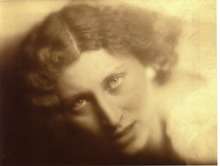 | |
| Born |
Hilde Sofer 18 October 1905 Vienna, Austria-Hungary |
| Died |
24 September 2001 (aged 95) Camden, London |
| Nationality | British, Austrian |
| Known for | Dance, choreography and teaching |
| Movement | Expressionism and Integrated dance |
| Spouse(s) | Adershir Kavershir Boman-Behram (1940-1975, 1989-2000) |
| Website | Official website |
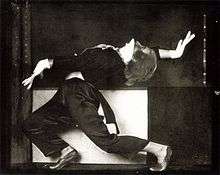

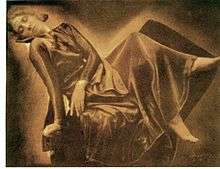
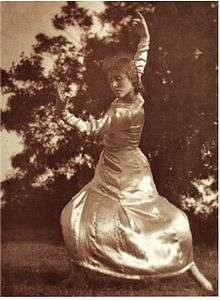
Hilde Boman-Behram (birth name Hilde Sofer, stage name Hilde Holger; 18 October 1905 – 24 September 2001) was an expressionist dancer, choreographer and dance teacher whose pioneering work in integrated dance transformed modern dance.[1][2]
Family
Holger came from a liberal Jewish family. She was born in 1905, the daughter of Alfred and Elise Sofer Schreiber.[3] Her father wrote poetry, and had died by 1908. Her grandfather made shoes for the Austrian court.
After Nazi Germany invaded Austria, Holger fled Vienna in 1939, because her entry into England was denied, she went to India.[4] In Mumbai she met the homeopath and art loving Dr. Ardershir Kavasji Boman-Behram, they married in 1940.[5] Her mother, step-father and fourteen other relatives all perished in the Holocaust.
Hilde Holger had two children. The first was born 1946 in India, her daughter Primavera Boman-Behram. In New York she became a dancer, sculptor and jewelry designer. In 1948 Holger's family emigrated to Britain.[5] Her second child, a son named Darius Boman-Behram, was born in 1949. He had Down syndrome, but inspired Holger to work with physically disabled people.
Work
Hilde Holger started to dance at age six. At that time she was too young to join the Vienna State Academy of Music and Dramatic Art, so she settled for ballroom dancing lessons taken with her sister (Hedi Sofer), until she was accepted to study with radical dancer Gertrud Bodenwieser,[6] then a professor at the Vienna State Academy. They were admirers of the work of Isadora Duncan and Ruth St. Denis, as well as the artists of the Secession. Holger soon rose to be Bodenwieser's principal dancer and friend, and toured with Bodenwieser's company all over Western and Eastern Europe. She toured with her own Hilde Holger Dance Group as well. At age eighteen she had her first solo performance in the Viennese Secession. Later in the Viennese Hagenbund and theaters in Vienna, Paris and Berlin, her much-lauded expressionist dance caused quite a stir. Because of her passion for dance, in 1926 she formed the New School for Movement Arts in Palais Ratibor, right in the heart of Vienna. Her children's performances were danced in parks and in front of monuments there.

On 12 March 1938 Adolf Hitler's Nazi Germany sent troops into Austria, and adopted a law to unify the country with Austria, at that time it was forbidden for Jews to perform. She received help to flee Austria from her friend Charles Petrach. She decided to go to India because that country's art was the most compelling to Western people, she said at that time.
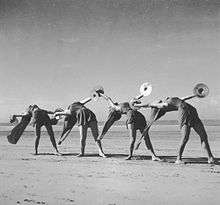
In India she had the opportunity to incorporate new experiences into her work, especially the hand movements of Indian dance. Classical Indian dance has over three hundred of them, used to express life and nature. In 1941 Holger founded a new school of dance in Bombay, she took students of all race, religion and nationality without prejudice. Like when she was in Vienna, Holger again took part in the artistic community. Amongst her friends included the Indian dancer Ram Gopal, he danced in Holger's dance school. In 1948 because of the partition of India and the growing violence between Muslims and Hindus she emigrated again, this time to Britain.
Once in England, her Holger Modern Ballet Group performed in parks, churches and theaters. She again opened a new dance school, The Hilde Holger School of Contemporary Dance and remained faithful to their style of teaching that the body and mind must form one unit in order to be a good dancer. Her breakthrough in London, 1951, celebrated Holger with the premiere of "Under the Sea", inspired by the composition by Camille Saint-Saens.
In 1972 she performed a piece entitled "Man against flood", it was in honour of the Chinese Communist Party member Rewi Alley. It included dancers forming a human wall against a flood of water.[7]
Her performance "Apsaras" (1983) explored her experiences in India. In the summer of 1983 she went back to India, where she had been last in the year 1948. There she worked as a choreographer for a large dance group directed by Sachin Shankar.
Holger was particularly proud of her work with the mentally handicapped. She created a form of dance therapy for children who, like her son Darius, have Down syndrome. Holger was the first choreographer who mixed professional dancers with young adults with severe learning disabilities. In 1968 at the Sadler's Wells, Holger orchestrated "Towards the Light", with music by Edvard Grieg. It was pioneering, innovative, and one of the first integrated dance pieces to be seen on a professional stage.[8]
Life work
Hilde Holger left a lasting impression on three generations of dancers and choreographers. While teaching her standards were high and she was not afraid of risk.[2] She accepted students without prejudice, including students with disabilities, as long as they were sincere. One of her students, Wolfgang Stange, continued her work with people with learning difficulties, like Down syndrome and autism, as well as people with physical disabilities. Stange's Amici Dance Theatre Company which was the first physically integrated dance company in Great Britain, which created a performance entitled, HILDE, that was performed at the Riverside Theatre in London in 1996, and at the Odeon in Vienna in 1998. This HILDE Performance in Vienna excited the Ballet Master of the Vienna State Opera Ballet, who in turn put a performance on the stage of the Opera House with people with learning disabilities. These performances were received with great applause!
In her last few weeks Holger still held dance lessons in her basement studio in Camden, London, where she lived for more than fifty years. Among some of her students included Lindsay Kemp, Liz Aggiss, Jane Asher, Royston Maldoom and Carl Campbell.
Choreography
| Year | Performance | Music | Notes |
|---|---|---|---|
| 1923 | Trout | ||
| 1926, | Funeral March for a Canary | Lord Berners | |
| 1926, 1988 | Mechanical Ballet | Ludwig Hirschfeld Mack | |
| 1929 | Hebraischer Tanz solo | Alexander Veprik | |
| 1929 | Sarabande und Bourree | Johann Sebastian Bach | |
| 1929 | Tanz nach Rumaischene Motive | Béla Viktor János Bartók | |
| 1929 | The Martyrdom of Saint Sebastien | Claude-Achille Debussy | |
| 1929 | Chaconne & Variations | George Frideric Handel | |
| 1929 | Mutter Erde | Heinz Graupner | |
| 1929 | Lebenswende | Karel Boleslav Jirák | |
| 1929 | Englischer Schafertanz | Percy Aldridge Grainger | |
| 1929 | Marsch | Sergei Sergeyevich Prokofiev | |
| 1931 | Javanische Impression | Heinz Graupner | |
| 1933 | Kabbalistischer Tanz | Vittorio Rieti | |
| 1936 | Ahasver | Marcel Rubin | |
| 1937 | Golem | Wilckens | |
| 1948 | Russian Fairy Tales | Alexander Borodine, Modest Petrovich Mussorgsky | |
| 1948 | Emperors new Clothes | Wolfgang Amadeus Mozart | |
| 1948 | Pavane | Maurice Ravel | |
| 1948 | Viennese Waltz | Johann Strauss II | |
| 1948 | Annunciation | ||
| 1948, 1954 | Selfish Giant | ||
| 1948 | Tales and Legends in Modern Ballet | ||
| 1952 | Dance with Tambourines | Fritz Dietrich | |
| 1952 | Slavic Dance | Antonín Dvořák | |
| 1952 | Nocturne | Heinz Graupner | |
| 1952 | Dance with Cymbals on the Indian Ocean | ||
| 1954 | Aztec Cult (Sacrifice) | ||
| 1954 | Barbar the Elephant | ||
| 1954 | Old Vienna | ||
| 1954 | Orchid | ||
| 1954 | Rhythm of the East | ||
| 1954 | Tibetan Prayer Songs | ||
| 1955 | Hoops | Georges Bizet | |
| 1955 | Jazz | Heinz Graupner | |
| 1955 | Men & Horses | John S. Beckett | |
| 1955 | Valse Caprice | Aram Khachaturian | |
| 1955 | Toccata | Paradies | |
| 1955 | Galliarde-Siciliano | Ottorino Respighi | |
| 1955 | Under the Sea | Camille Saint-Saëns | |
| 1955 | Angels | ||
| 1955 | Dance Etudes | ||
| 1956 | Prelude | Johann Sebastian Bach | |
| 1956 | Theme and Variations | George Frideric Handel | |
| 1956 | Etude | ||
| 1957 | Allegro Vivaci | Johann Sebastian Bach | |
| 1957 | Stranger | Aaron Copland | |
| 1957 | Café Dansant | George Gershwin | |
| 1957 | Witches Kitchen and Walpurgisnight | Paul Dukas | |
| 1957 | Nativity | George Frideric Handel, Franz Schubert, Johann Sebastian Bach | |
| 1957 | The Toyshop | Aram Khachaturian | |
| 1957 | March | Lev Knipper | |
| 1957 | Sale | Johann Strauss II | |
| 1957, 1961, 1974 | Egypt | Giuseppe Verdi | |
| 1957 | Bird | ||
| 1957 | The Hunter and the Geese | ||
| 1957 | Madonna | ||
| 1958 | Dance with Bells | John S. Beckett | |
| 1958 | Ritual Fire Dance | Manuel de Falla | |
| 1958 | Song of the Earth | Antonín Dvořák | |
| 1958 | Dance for four Women | Joaquín Turina | |
| 1958 | Dance Divertissement | ||
| 1960 | Allegro | Arcangelo Corelli | |
| 1960 | Imaginary Invalid | Gioachino Antonio Rossini | |
| 1960 | The Farmer’s Curst Wife | Peter Warlock | |
| 1960 | Frankie and Johannie | Peter Warlock | |
| 1960 | Dawn of Life | ||
| 1960 | Secret Annexe | ||
| 1960 | West Indian Spiritual | ||
| 1961 | Pierrot | Johann Sebastian Bach | |
| 1961 | The House of Bernarda Alba (The Sisters) | Joaquín Turina | written by Federico Lorca |
| 1961 | Metamorphoses | Ovid | |
| 1961 | Dance for Two | Germaine Tailleferre | |
| 1963 | Narcissus (The Image) | Heinz Graupner | |
| 1963 | Lady Isobel and the Elf Knight | Peter Warlock | |
| 1963 | Dream | Wilckens | |
| 1963 | Dance for Men | ||
| 1965 | Nightwalkers | Olivier Messiaen | |
| 1965 | Canticle of the Sun | Johann Pachebel | |
| 1965 | Ballad of the Hanged (Villons Epitaph) | ||
| 1965 | Cain’s Morning | ||
| 1965 | Creation of Adam & Eve | Olivier Messiaen | |
| 1965 | Saint Francis and his sermon to the birds | ||
| 1968 | Salome | Philip Croot | |
| 1968 | The Wise & Foolish Virgins | Philip Croot | |
| 1968 | Towards the Light | Edvard Greig | |
| 1968 | Angelic Prelude – Inspirations | Giuseppe Torelli | |
| 1970 | The Scarecrow | ||
| 1971 | Snowchild | ||
| 1972 | Tribal Nocturne | Béla Viktor János Bartók | |
| 1972 | Tranquillity | Alan Hovhaness | |
| 1972, 1974 | Bamboo | Aram Khachaturian | |
| 1972 | Shiva and the Grasshopper | Gordon Langford | |
| 1972, 1974 | Renaissance | Federico Mompou | |
| 1972, 1974 | Hieronymus Bosch | Roger Cutts | |
| 1972 | Inspirations | Sergei Rachmaninoff, Claude Debussy | |
| 1972 | Suspension | Maurice Ravel | |
| 1972 | The Hypopatic Doctor | Gioachino Antonio Rossini, Franz Schubert | |
| 1972 | Bauhaus | Erik Satie | |
| 1972 | Embrace | Erik Satie | |
| 1972, 1979 | Prelude | Giuseppe Torelli | |
| 1972 | Man against Flood | Yin Chang-Tsung | |
| 1972 | Flight | ||
| 1972 | Honore Daumier | ||
| 1974 | Paul Klee Spring Awakening | Béla Viktor János Bartók | |
| 1974 | Archaic | ||
| 1974 | The Hunter and the Hunted | ||
| 1974 | Spring Awakening | ||
| 1975 | Mobiles | Alfredo Casella | |
| 1975 | Rockpaintings | Roger Cutts | |
| 1975 | Toulouse Lautrec | Erik Satie | |
| 1976 | The Park | ||
| 1977 | Prelude and Chorale | César Franck | |
| 1977 | Sacred and Profane Dance | ||
| 1979 | Tower of Mothers | Carl Orff | |
| 1979 | We are Dancing | Johann Sebastian Bach | |
| 1979 | Tradisches Ballet | choreographed by Oskar Schlemmer | |
| 1979 | Homage to Barbara Hepworth | Heitor Villa-Lobos | |
| 1979 | African Poetry | ||
| 1979 | Apsaras | ||
| 1983 | Poems on a Boy’s Painting | poems by Ke Yan, pictures by Bu Di | |
| 1983 | The Bow and Arrow | ||
| 1983 | Fishes | ||
| 1983 | The Letter | ||
| 1983 | The Manikin | ||
| 1983 | The Penguin Story | ||
| 1983 | Pick a Back | ||
| 1983 | Sea and Sand | ||
| 1983 | Sea – Clouds – Sparkling Lighthouse – Flames | ||
| 1983 | Umbrellas | ||
| 1983 | What is a Poem | ||
| 1984 | Scherzo | Frédéric Chopin | |
| 1984 | The City | Marcel Rubin | |
| 1984 | Don Quixote | ||
| 1984 | Ritual | ||
| 1988 | Children of the Vorstadt | Franz Lehár | |
| 1988 | Death and the Maiden | Franz Schubert | |
| 1988 | Hands | David Sutton-Anderson | |
| 1988 | Four Seasons | Antonio Vivaldi | |
| 1988 | The Family | Hugo Wolf | |
| 1988 | Childrens Games | ||
| 1988 | Egon Schiele in Memoriam | ||
| 1988 | Flemish Picture Sheet | ||
| 1988 | Fluteplayers | ||
| 1988 | The Least is the Most | ||
| 1988 | Models | ||
| 1995 | Whales | ||
| 2000 | Rhythms of the Unconscious Mind |
References
- ↑ "Hilde Holger : Central European Expressionist Dancer". www.50yearsindance.com/category/hilde-holger/. 2011. Retrieved 2016-02-12.
- 1 2 "Hilde Holger : Central European Expressionist Dancer". www.hildeholger.com. 2007. Retrieved 2012-12-18.
- ↑
- ↑ Julia Pascal (2000-03-08). "Adi Boman : Scientist on an unresolved search for a cancer cure". The Guardian. Retrieved 2012-12-18.
- 1 2 "Ardeshir Kavasji Boman Behram 1909–2000". sueyounghistories.com. 2008-12-22. Retrieved 2012-12-18.
- ↑ Vernon-Warren, B. and Warren, C. (Eds) (1999) Gertrud Bodenwieser and Vienna's Contribution to Ausdruckstanz. Routledge. ISBN 90-5755-035-0, pg. 22
- ↑ Lei, W. (28 October 1972) Man Against Flood. The New Evening Post.
- ↑ Julia Pascal (2001-09-26). "Hilde Holger : As a dancer and teacher she kept the spirit of German expressionism alive in London". The Guardian. Retrieved 2012-12-27.
Further reading
- Denny Hirschbach, Rick Takvorian (Hg.)(1990): The Power of Dance. Hilde Holger. Wien.Bombay.London.Bremen: characters + tracks. ISBN 3-924588-19-8
External links
- Official website
- Leslie Horvitz: The Hilde Holger Biography. hildeholger.com
- "News | UK and Worldwide News | Newspaper". The Independent. Retrieved 2017-03-07.